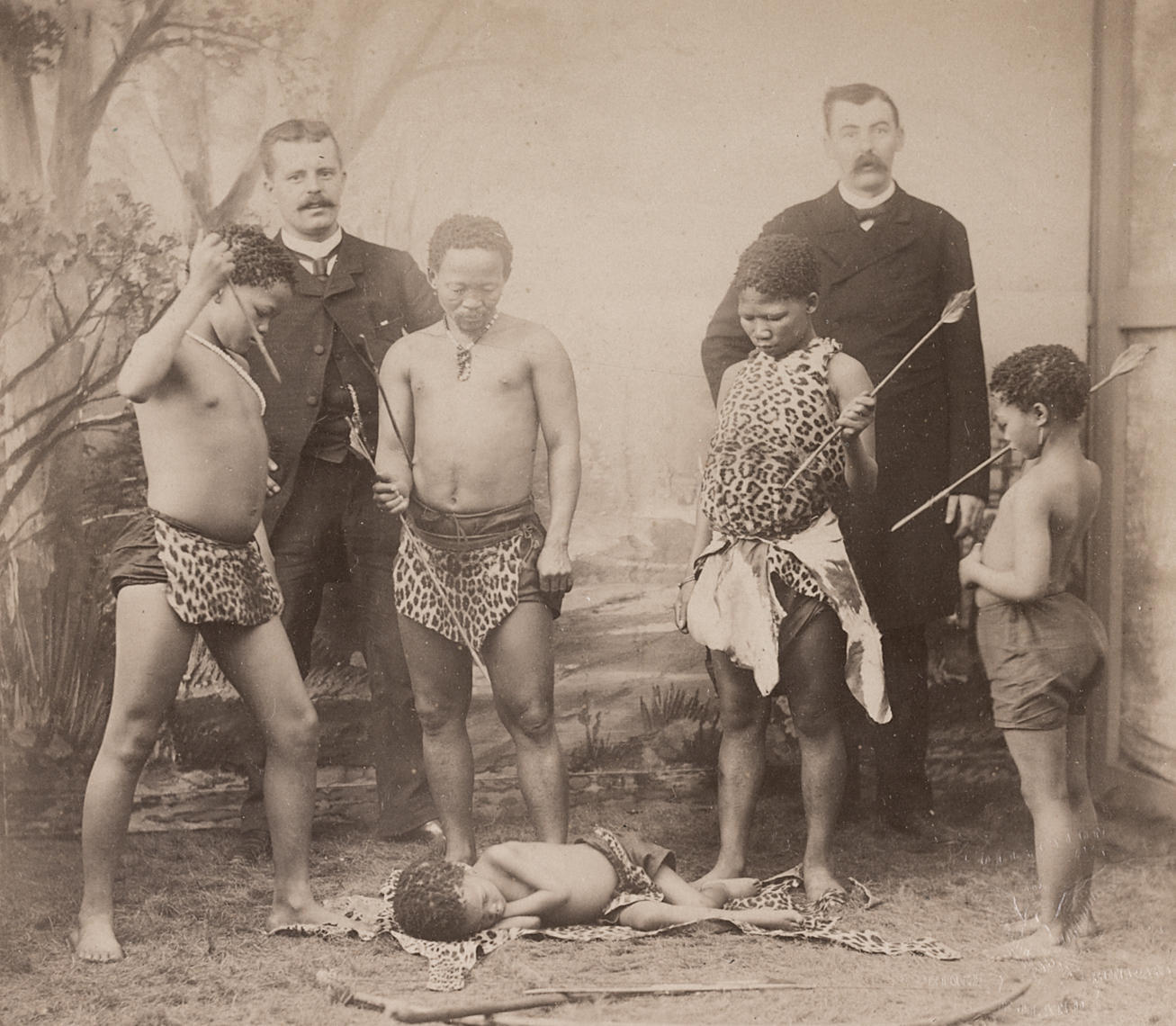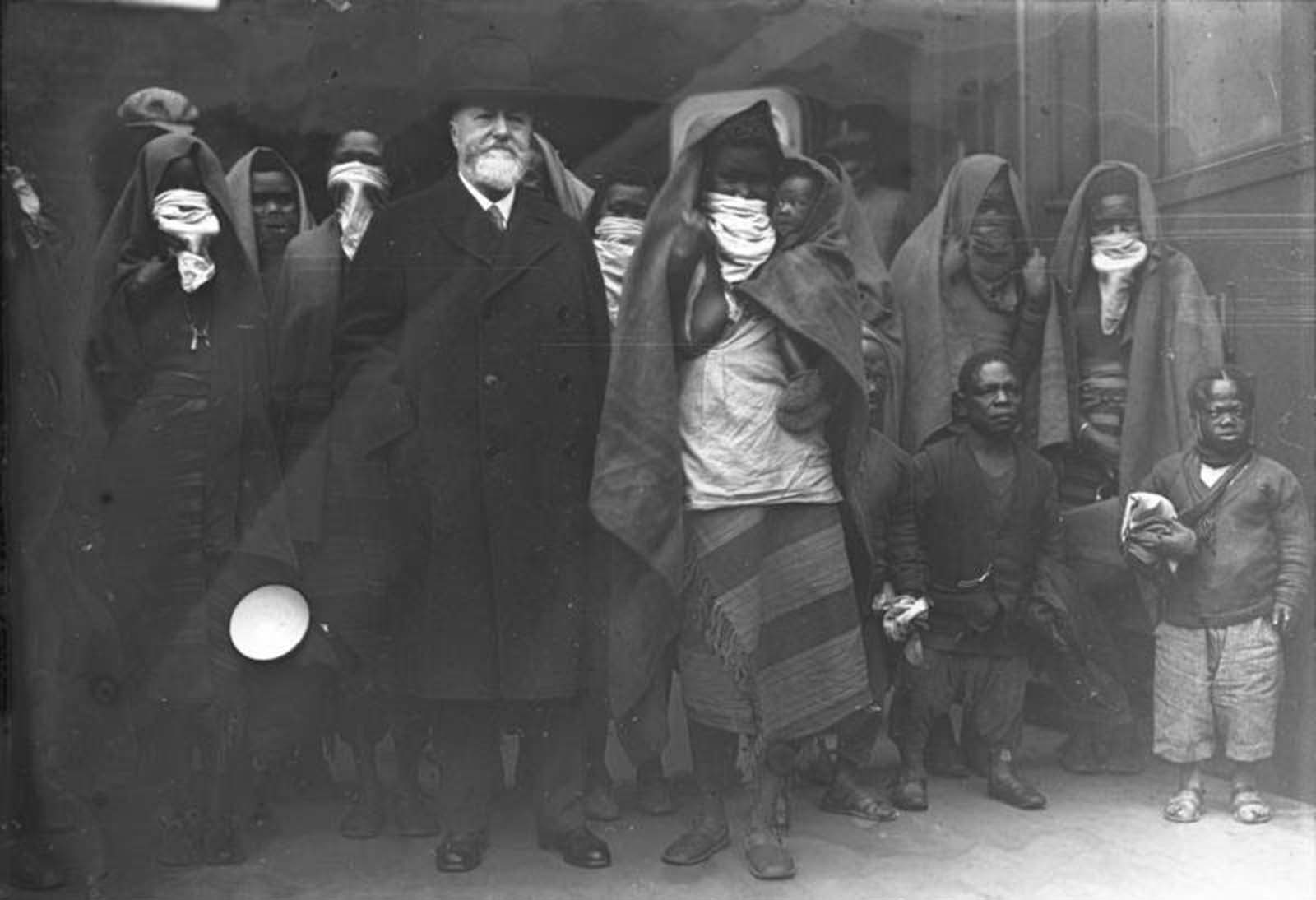These shocking rare photographs show how so-called ‘human zoos‘ around the world kept ‘primitive natives’ in
enclosures so Westerners could gawp and jeer at them. The horrifying images, some of which were taken as recently as 1958, show how black and Asian people were cruelly treated as exhibits that attracted millions of tourists.
In the late 19th and early 20th centuries, the Western world was desperate to see the “savage,” “primitive” people described by explorers and adventurers scouting out new lands for colonial exploitation. To feed the frenzy, thousands of indigenous individuals from Africa, Asia, and the Americas were brought to the United States and Europe, often under dubious circumstances, to be put on display in a quasi-captive life in “human zoos.”
Human zoos could be found in Paris, Hamburg, Antwerp, Barcelona, London, Milan, and New York City. Carl Hagenbeck, a merchant in wild animals and future entrepreneur of many zoos in Europe, decided in 1874 to exhibit Samoan and Sami people as “purely natural” populations.
In 1876, he sent a collaborator to the Egyptian Sudan to bring back some wild beasts and Nubians. The Nubian exhibit was very successful in Europe and toured Paris, London, and Berlin.
In 1880, Hagenbeck dispatched an agent to Labrador to secure a number of Esquimaux (Eskimo / Inuit) from the Moravian mission of Hebron; these Inuit were exhibited in his Hamburg Tierpark.
 |
In the Days of Human Zoos, Western civilization |
Other ethnological expositions included Egyptian and Bedouin mock settlements. Hagenbeck would also employ agents to take part in his ethnological exhibits, with the aim of exposing his audience to various different subsistence modes and lifestyles.
Both the 1878 and the 1889 Parisian World’s Fair presented a Black Village (village nègre). Visited by 28 million people, the 1889 World’s Fair displayed 400 indigenous people as the major attraction. The 1900 World’s Fair presented the famous diorama living in Madagascar, while the Colonial Exhibitions in Marseilles (1906 and 1922) and in Paris (1907 and 1931) also displayed humans in cages, often nude or semi-nude.
The 1931 exhibition in Paris was so successful that 34 million people attended it in six months, while a smaller counter-exhibition entitled The Truth on the Colonies, organized by the Communist Party, attracted very few visitors. Nomadic Senegalese Villages were also presented.
In 1904, Apaches and Igorots (from the Philippines) were displayed at the Saint Louis World Fair in association with the 1904 Summer Olympics. The US had just acquired, following the Spanish–American War, new territories such as Guam, the Philippines, and Puerto Rico, allowing them to “display” some of the native inhabitants.
In 1906, Madison Grant—socialite, eugenicist, amateur anthropologist, and head of the New York Zoological Society—had Congolese pygmy Ota Benga put on display at the Bronx Zoo in New York City alongside apes and other animals.
At the behest of Grant, the zoo director William Hornaday placed Benga displayed in a cage with the chimpanzees, then with an orangutan named Dohong, and a parrot, and labeled him The Missing Link, suggesting that in evolutionary terms Africans like Benga were closer to apes than were Europeans. It triggered protests from the city’s clergymen, but the public reportedly flocked to see it.
Benga shot targets with a bow and arrow, wove twine, and wrestled with an orangutan. Although, according to The New York Times, “few expressed audible objection to the sight of a human being in a cage with monkeys as companions”, controversy erupted as black clergymen in the city took great offense.
“Our race, we think, is depressed enough, without exhibiting one of us with the apes,” said the Reverend James H. Gordon, superintendent of the Howard Colored Orphan Asylum in Brooklyn. “We think we are worthy of being considered human beings, with souls.”
On Monday, September 8, 1906, after just two days, the directors decided to close the exhibition, and Benga could be found walking the zoo grounds, often followed by a crowd “howling, jeering and yelling.”
At the human zoos of the early 20th century, the indigenous people on display faced a number of challenges. African tribal members were required to wear traditional clothing intended for the equatorial heat, even in freezing December temperatures, and Filipino villagers were made to perform a seasonal dog-eating ritual over and over to shock the audience. A lack of drinking water and appalling sanitary conditions led to rampant dysentery and other illnesses.
In most cases, there were no bars to keep those in human zoos from escaping, but the vast majority, especially those brought from foreign continents, had nowhere else to go. Set up in mock “ethnic villages,” indigenous people were asked to perform typical daily tasks, show off “primitive” skills like making stone tools, and pantomime rituals. In some shows, indigenous performers engaged in fake battles or tests of strength.
In the end, there was no outrage over the subjugation of humans that put an end to human zoos. In the years leading up to World War II and beyond, the public’s time and attention was drawn away from frivolity and toward geopolitical conflict and economic collapse. By the middle of the 20th century, television replaced circuses and traveling “zoos” — human or otherwise — as the preferred mode of entertainment, and the display of indigenous people for entertainment fell out of fashion.
BLOG COMMENTS POWERED BY DISQUS







